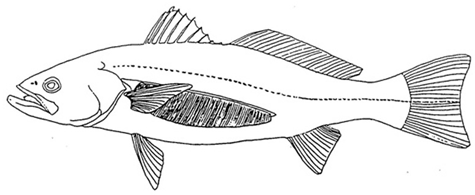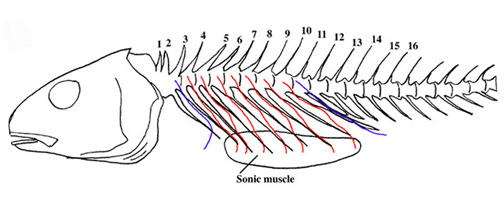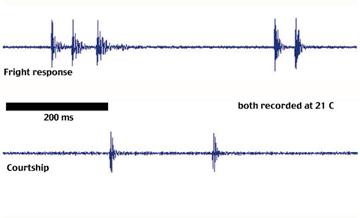Sound production in family Sciaenidae
Martin Connaughton
Washington College
Asst. Professor of Biology 300 Washington Ave
410-778-7727 Chestertown, MD 21620
mconnaugton2@washcoll.edu
Overall research goal
To describe the anatomy and physiology of the sonic muscles of sciaenid fishes, characterize the sounds produced by these muscles, and describe the behaviors in which sound production plays a role.
Introduction
Sciaenid fishes, or drum fishes, are considered important commercial and recreational species throughout the Mid-Atlantic region of the United States. Most of the members of this family are prolific sound producers and sound has been tied to courtship behaviors, and has even been used to locate spawning populations of some sciaenids. The more we know about the sonic behaviors of these fish, the more accurately we may be able to predict the location and timing of spawning activity. This, in turn, might be used to manage the stocks of these species more effectively by proscribing certain waters at certain times of the year from commercial fishing.
Drum fishes produce sounds, variously described as knocks, purrs,
or grunts, through the use of sonic muscles. These muscle lie along the
inside of the body cavity, down the length of the swimbladder, a gas filled
gland that functions to maintain neutral buoyancy in the fish, but which
also amplifies the sounds produced by the sonic muscles.
 |
| Figure 1. An illustration showing the position of the sonic muscles inside the body cavity of the weakfish. |
Past and current studies
My past work on the weakfish, Cynoscion regalis, has included field studies of the seasonality of sound production and laboratory observations of the role of sound production in courtship behaviors. In addition, we have studied the seasonal tripling in mass of the sonic muscle in response to increasing sex steroids, the mechanism of sound production, and the impact of fish size, water temperature and sonic muscle size on the sounds produced.
Recently completed work has involved an anatomical study of the number and pathways of nerves supplying the sonic muscles in three related, but morphologically and ecologically different species, the weakfish, the Atlantic croaker Micropogonias undulatus, and the spot, Leiostomus xanthurus.
 |
| Figure 2. An illustration of the pathway of the spinal nerves supplying the sonic muscle (those in red) of the Atlantic croaker relative to the skeletal structures. |
Ongoing work in my lab has centered on the Atlantic croaker. In this species, both the male and female bear sonic muscles, unlike the weakfish or spot in which only the male bears these muscles. The croaker also use their sonic muscles in at least two distinct behaviors; courtship and fright responses. In the lab, we have been using a hydrophone to record and compare the sounds produced during these two behaviors. We hope to describe the differences in these two calls, which have very different functions: one warns of danger and may scare away other croaker, while the other may act to draw a female closer to the male during courtship.
 |
| Figure 3. Waveforms of sounds produced by croaker during a fright response behavior (top panel) and during courtship (bottom panel). Note the difference in the repetition rate of the pulses within each call, the courtship call is much slower. There are also differences in the frequencies of these two types of calls. |